By Lydia Crochet
It’s no secret that firefighting is a male-dominated profession. In fact, if you search the internet for “female firefighters,” the first things to pop up are links to Halloween costumes and calendars.
Career women have certainly come a long way, but when it comes to the business of putting out fires, women aren’t necessarily in the spotlight. The Mattel toy company didn’t come out with a “Firefighter Barbie” (complete with a Dalmatian) until 1994. Before this date, Barbie had already been a rapper and an ambassador for UNICEF.
Firefighting is a challenging and dangerous occupation. Rescuing people from burning buildings, cars and other dangerous situations is always risky. Burns, falls, strains, and smoke inhalation are just some of the hazards.
But there are many women across the country, and all over the world, who are career or volunteer firefighters. I recently had the privilege of speaking to a few exceptional local women who dedicate their lives to public service as firefighters.
They come from different backgrounds, have different journeys and work in different districts, but they have two major things in common: Each has a strong and unwavering work ethic and each whole-heartedly loves her job.
Charlotte Lantier
Charlotte Lantier is a full-time firefighter with Ward One Fire Protection District 1 in Moss Bluff. The Ward One Fire Department is a full-time operating facility with a fully staffed fire crew of 14, supplemented by volunteers.
I met with Lantier at the Ward One Fire Station 5, on Joe Miller Road, where we discussed her journey in the profession. Being a firefighter is not something she ever dreamed of doing while she was growing up. She was working at a local bank when she learned of a job opening at the LeBleu Settlement Fire Department, where her father was a volunteer firefighter. She worked for the department for eight years until she moved to Ward One, where she’s been working full-time for three years.
In addition to being a firefighter and first responder, she’s also an Emergency Medical Technician (EMT).
As for what it’s like being female in the department, Lantier says, “People have asked me, ‘What do you like to be called? A ‘fire-woman’? A ‘fire-lady’? No need for that.” She laughs. “Call me a firefighter or first responder, that’s all. And I don’t mind being called a fireman.”
Lantier refers to the department members as “family” and says she loves the camaraderie. She describes her position among her male colleagues as equal these days. But it didn’t always feel that way. In the beginning of her career, she encountered her fair share of doubters and skeptics. Some would suggest that she handle the “lighter” work on a scene, simply because she’s female. “But that’s not me. I do the same job as the others,” she explains.
Lantier has been a firefighter for 11 years, and during that time she’s had to “prove that she can do what needs to be done” on more than one occasion.
When asked to give an example of a difficulty she faces as a female firefighter, Lantier says with a smile, “Being short and small framed.” And after doing some research on firefighting gear, I understood why. Gear — such as boots, bunker pants, a jacket, a helmet, gloves, a mask and an air pack — weighs between 45 and 55 pounds. When other items, such as flashlights, radios, cameras and tools are added, the extra weight can be as much as 75 pounds.
But Lantier makes light of the heavy gear saying, “My feet are smaller so my boots weigh less.”
I asked Lantier to tell me something she wishes more people knew about her profession. Her answer was immediate, “Don’t stop in front of a fire engine, or any emergency vehicle. Pull over and out of the way.” From the moment a first responder receives a call, the clock is ticking and every second counts. A slow-moving vehicle could literally cost someone their life. Pulling over is not only the right thing to do, it’s the law.
Lantier added, “When emergency personnel are working on the side of the road, motorists are to move to the far lane. If that’s not possible, slow down to at least 25 mph.”
There’s lots of training involved in becoming a firefighter, with many hours required annually to maintain certifications. Lantier is required to fulfill 12 hours of training at the CERTC (Calcasieu Emergency Response Training Center), 12 hours of driver training and 240 hours of company training (training with your shift) every year, just to name a few.
With recruitment down for new firefighters, I asked Lantier what she would say to any young lady considering this path. “Go for it! Don’t expect to get rich, but the job is very fulfilling. It’s a very respectable career with good benefits.”
And when asked about what’s going through her mind on the way to a call, she calmly responded, “Prepare for the worst and hope for the best.”
Capt. Teri Gilland
Capt. Teri Gilland, District Captain with the Ward Six Fire Protection District 1, has been a firefighter for more than 20 years. In a district that services 125 square miles and four stations, Gilland is the only full-time employee.
I visited Gilland at her office on Marcantel Road in DeQuincy to learn more about her experience in firefighting.
“At the age of 18, my twin brother joined the local fire department, Ward Six Fire Protection. My husband was a member of the fire department, and after riding to a few fires with him and seeing that the department could use more volunteers, I decided to join the department in 1992. I was unaware that this volunteer job would become my career.”
With hard work and many hours of training, Gilland was hired in 1997 as fulltime District Captain. Her duties as captain include leading the fire attack into burning buildings, extricating victims at vehicle crashes, fighting woods and vehicle fires and responding to other emergency situations.
When asked what it was like to be a female in the world of firefighting, Gilland proudly responded, “Our fire department has more trained volunteer female firefighters than any other fire department in Southwest Louisiana.”
Like Lantier, Gilland used the word “family” to describe her department and the neighboring fire departments. “We’re one big family around here. Our motto is ‘Pride, Teamwork, Excellence.’ The guys in the department respect me and let me do my job. We’re a team.”
When I asked Gilland what she would like the general public to know, the first part of her answer echoed Lantier’s: “Pull over for emergency vehicles!”
Then she made a very important point concerning fire safety, “Every home should have smoke detectors. There’s no reason for any home not to have them.” And she’s right; anyone can get a smoke detector from local fire departments or at any Fire Prevention exhibit.
Gilland would also like to bring awareness to the importance of our local volunteer firefighters. “Most people don’t realize that these volunteers must complete over 300 hours per year of training.” When we hear the word “volunteer,” we tend to think in terms of simply “showing up for a while to help out.” But that’s not the case with volunteer firefighters. They can’t leave a call when they’ve had enough and want to go home. And they can’t just not show up. They have full-time jobs and families, and still find time to serve the community.
Unfortunately, first responders must answer calls that are heart-wrenching and even gruesome. But Gilland is quick to point out the bright side. “The times that I am able to help save someone’s home and belongings, or extricate someone from a mangled car and see them alive and doing well today, or help deliver a baby when the mom wasn’t able to make it to the hospital in time, make it worth dealing with the ‘bad’ times on the job.”
To future female firefighters, Gilland advises, “Never let anyone try to tell you that you cannot be a firefighter or that the job is too tough for a girl to do. It is the most rewarding career that I could have ever dreamed of having. It is hard at times and it takes a lot of physical effort and constant training, but it is worth it.”
Capt. Tammy Bellard
Capt. Tammy Bellard is the Fire Training Officer for the Sulphur Fire Dept. and Captain for the Ward 7 Vinton Fire Dept. As a child, her best friend’s mother was a firefighter, and ultimately became a mentor and an inspiration to Bellard. She recalls listening to the scanner while staying with her friend, and remembers the excitement of the calls. At that time, she had no idea she would eventually become a career firefighter.
In fact, Bellard was a computer programmer for a while and, well … hated it. So she jumped into the world of firefighting and first responding. And after 20-plus years, she’s never looked back.
Bellard received her first fire and EMT training in Florida, then moved back to Louisiana, where she received her paramedic certification. After years of hard work and hours of extensive training, including exclusive courses, such as Instructor I and II and Fire Officer I and II, Bellard now provides the exact same training she received all those years; she provides training in: Emergency Medical Response, Emergency Medical Technician, Fire Fighter I and II, Hazmat Awareness, HazMat Operations, HazMat Technician, Driver Operator, Aerial Operator, and Fire Officer I, II, and III.
She’s also involved in fire prevention education for students from elementary through high school and safety presentations for area businesses on topics such as CPR/AED or extinguisher training.
Bellard wears many helmets. She is also a Hazardous Materials Technician with Chem A and Chem B, a Juvenile Fire Setter and Educator, a BLS Instructor and Heartsaver for the American Heart Assoc. and a Louisiana Bureau of EMS Instructor and Program Director.
As for being a female firefighter, Bellard acknowledges that her path has not been easy. When she applied for the full-time position years ago, 17 were hired; Bellard was the only female. Although she feels she was never harassed, she’s certainly had skeptics throughout the years.
“I learned what I needed to learn and I did the work, just like everyone else. I made sure they’d never know there was a ‘girl’ in the bunker.” And these days, for the most part, if [a firefighter] is treated differently because she’s a woman, she chalks it up to “chivalry.”
Bellard describes her relationship with her colleagues with the same word the other firefighters used: family. “They are my extended family. You can go anywhere in the United States, stop at a fire station and tell them you are a firefighter and it’s like a family reunion. I have and always will be a career/volunteer firefighter.”
I asked Bellard what she wished more people knew about firefighters. “It’s the misconception that firefighters sit around all day waiting for a call — that bothers me. There’s so much more to this job than working a nozzle. The equipment must be at 100 percent; hydrants need to be flushed; there’s always work to be done.”
TV shows and movies that involve fire stations often add to this misconception by portraying the firefighters as bored, as if all they do is play cards to pass the time until they get a call. That’s truly not the case, says Bellard. These women are constantly “putting out fires” — even when they are not literally putting out fires.
Lantier and Gilland share the same sentiment. Lantier’s administrative duties, like payroll, invoices, supplemental pay, etc., are as important as the other duties around the station, such as truck maintenance. Gilland says, “There’s more to the job than emergencies.”
Along with taking care of the daily business operations of the department, Gilland works to maintain fire equipment, 14 fire trucks and four stations. She handles everything from mountains of paperwork to changing toilet paper rolls. “And changing batteries,” she adds with laugh. “Many, many batteries.”
Bellard says any woman considering a career in the profession should know, “Firefighting is an exciting, ever-changing and highly rewarding occupation.”
She believes that there are many attributes of a good firefighter. Honesty, dependability, physical fitness and being a quick learner (and remembering what’s learned under pressure) are at the top of her list. She also mentions other important qualities, like emotional stability, flexibility and a willingness to try new things. “No one person has all these attributes. We are all different. Each firefighter brings individual strengths to the team, and it is this variety of strengths that gives the team multiple options and balances.”
The Role Of Children
When asked what goes through her mind on the way to a call, Bellard didn’t hesitate: “Please don’t let any children be involved.” This was a common thread among the women. As mothers, a hurt child just hits too close to home.
During the interviews, I asked each of them to recall an instance that weighed heavily on their heart and mind — a memory that’s stayed with them through the years. Each answer involved children or young people.
For Lantier, it was performing CPR on an infant. For Gilland, it was a 12-year-old victim of a accident between a train and a vehicle. Bellard, who has responded to many automobile accidents in her career, recalled a particular car accident involving three young men, saying, “Some calls make you want to go home and hug your kid.”
Lori Primeaux-Coleman
These brave women have seen it all, and there’s nothing they can’t handle. They don’t require or expect to be treated differently. It’s not about gender; it’s about attitude, aptitude and fortitude.
Calcasieu Parish is fortunate to have these women, and many other women, as first responders.
Lori Primeaux-Coleman is a volunteer firefighter for Ward Six and the full-time secretary to the chief of the Carlyss Fire Department. “Being female as a volunteer firefighter will not give you special treatment or a different kind of training. We do the same training as the men. We have to put on the same kind of turn out gear in the same time.”
She recalls a quotation from a retired fire chief — one similar to a quotation Bellard used during our conversations — that really puts it all in the right perspective: “There’s only one type of fire, and that fire doesn’t care whose coming. It doesn’t discriminate. It doesn’t care if you are a career firefighter or volunteer, male or female.”



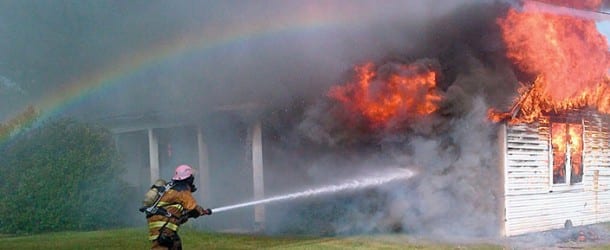
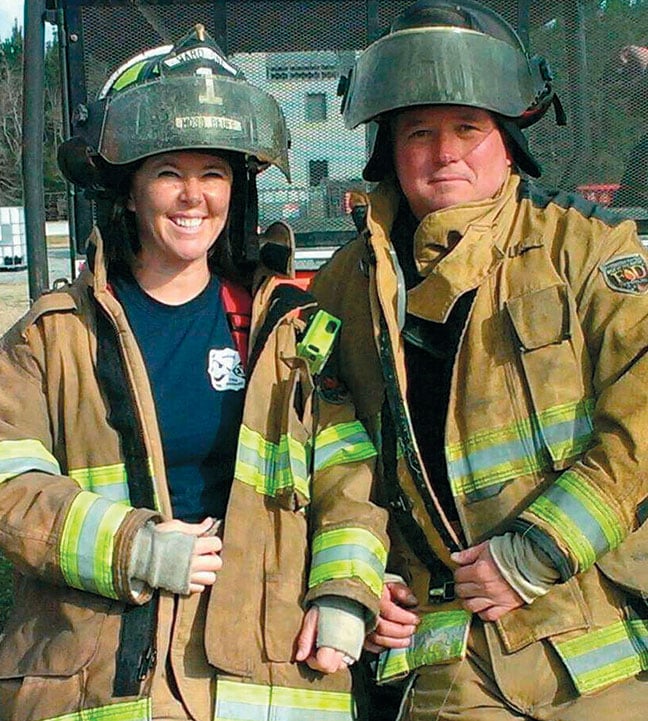
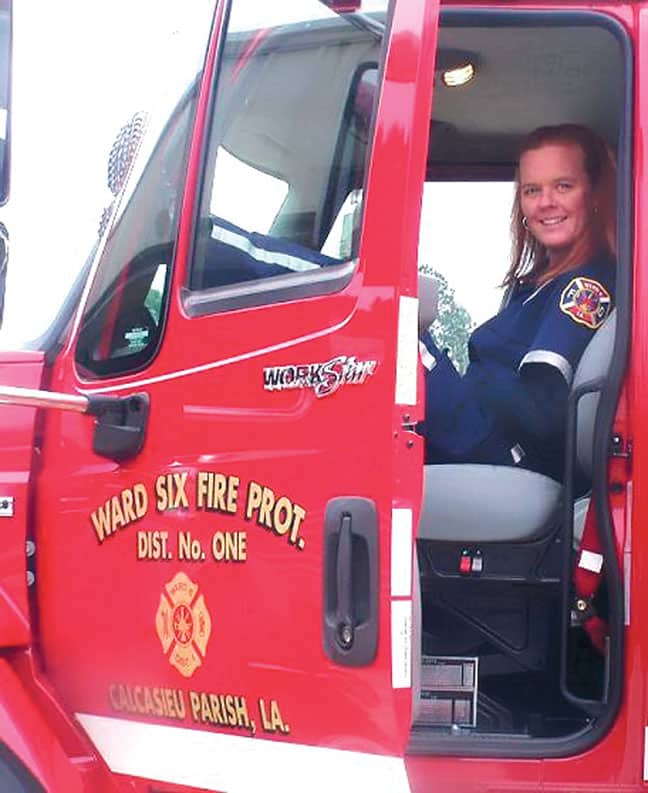
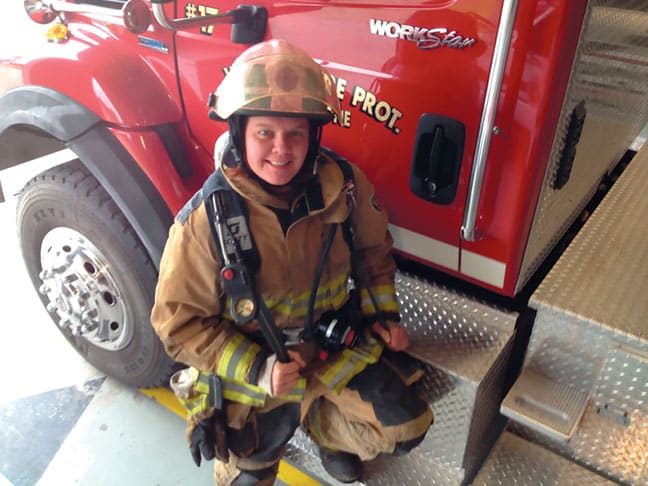
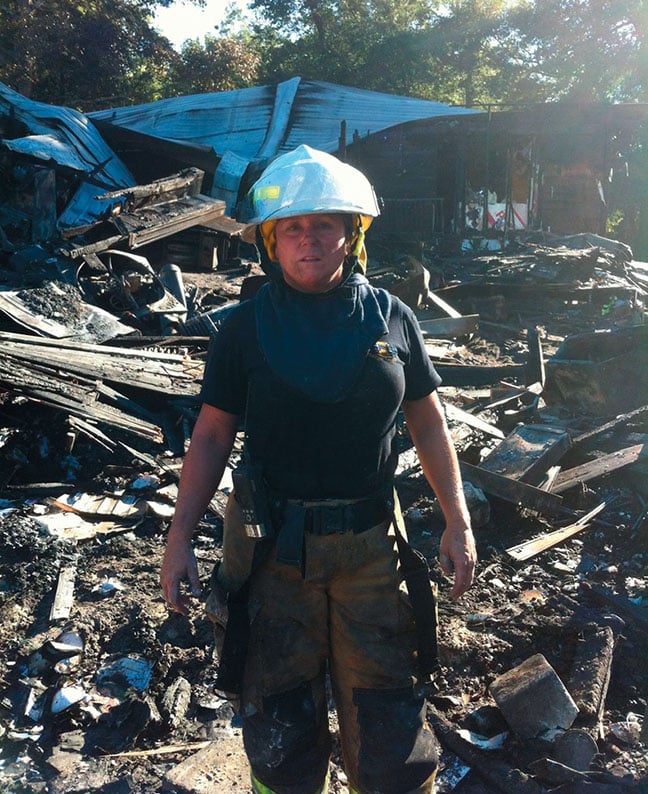
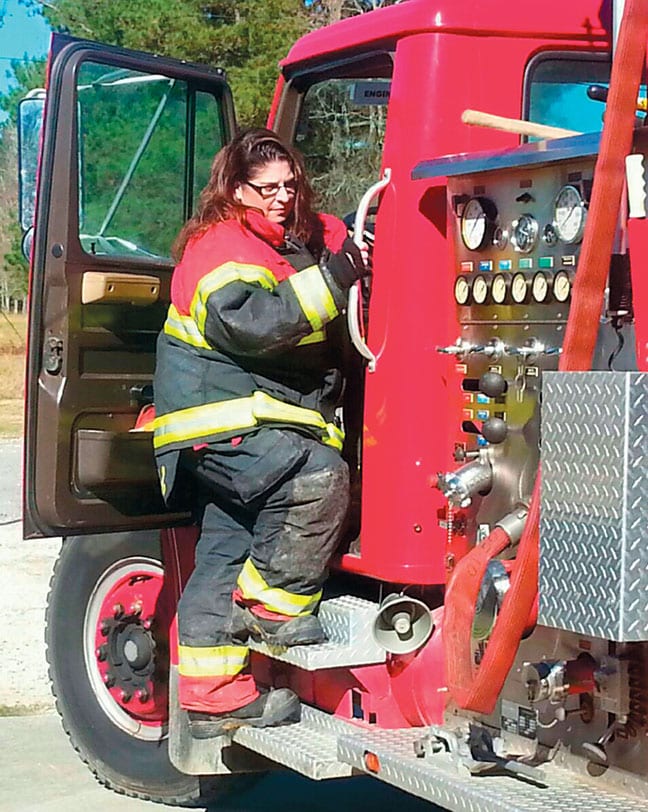












Comments are closed.